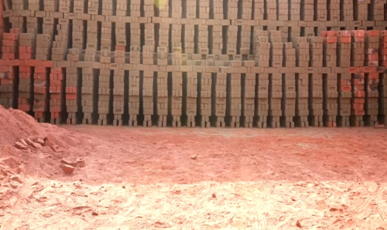Industrial Innovation – ZigZag Technology
The Industrial sector is the most energy intensive sector in Pakistan; accounting for 37.13% of the country’s overall energy consumption, according to Pakistan Energy Yearbook 2019. In industrial sector, Its is the strategy of National Energy Efficiency and Conservation Authority (NEECA) a total saving up to 1.3 MTOE will be achieved by improving energy efficiency in electrical systems, optimization of thermal utilities, and carrying out mandatory industrial energy audits.
The Industrial Sector includes “small scale, medium scale and large-scale industry involving manufacturing, making, formulating, altering, repairing, finishing, packing or otherwise treating any article or substance with a view to its use, sale, transport, delivery or disposal”. The sector is characterized by a high dependence on fossil fuels, such as natural gas, furnace oil, diesel, and coal for heat and/or power generation.
The Cement, Textile, Brick Kiln, Paper & Pulp and Sugar industries are the major consumers of energy within the Industrial sector. Most of the SMEs (Small and Medium Enterprises) belonging to these sectors use inefficient and outdated technologies result in huge production costs.
Brick Kiln, the industrial sub-sector:
There are around 20,000 traditional brick kilns in Pakistan. Many are located around urban areas and contribute significantly to air pollution and energy conservation. Pakistan’s brick sector is responsible for 1.5% of Pakistan’s Gross Domestic Product.
Traditional brick production in Pakistan consists of hand-made bricks which are baked in Fixed Chimney Bull's Trench Kilns (FCBTK), the most widely used brick firing technology in South Asia. This is one of the most contaminating techniques for brick production, resulting in a host of social and environmental impacts including air pollution, energy consumption, climate change, cardio-respiratory diseases, land use impacts and deforestation.
Every form of brick kiln has three zones:
- Pre heating zone
- Combustion zone
- Cooling zone
Pre heating zone

In the kiln, fire movement takes place in the direction of air travel. The fuel is fed in the combustion zone from the feed holes provided on the roof of the kiln.
Combustion zone

Generally three to six rows are fed continuously. Coal comes in contact with hot gases and combustion takes place in this zone.
Brick cooling zone:

In this zone, air enters from the unloading and picks up heat from fire bricks resulting in heating away and cooling of fire bricks. The coal fuel is fed for firing generally in two to three lines with coal used in big chunks the operation doesn’t require any electricity.
In this all process hefty amount of coal are consumed which has direct relation to energy inefficiency and environmental catastrophe. To overcome the problem of pollution, conserve energy and use it efficiently and to increase the productivity, a new method has been used as induced draft, Zigzag Technology.
Zigzag Technology:
In this method, raw bricks are kept in a stack keeping fire lines of gap in one side and two lines of gap on the other and similarly in the next stack of bricks. The fire and line gaps are kept in the opposite side so when air passes through them it travels in Zigzag patterns.
In this system, coal is crushed in small pieces. The holes fed continuously from crushed coal by using shovel. The hot air travels from the pipe holes to the chambers which are connected above with an adjustable duct to the main chimney pipe. An induced draught fan with a 15 to 20 horsepower motor is installed above the main pipe to create a proper combustion of fuel which sucks the hot air from the pipe and throws it into the main chimney.The use of fan not only burns the coal completely but reduces the carbon dioxide emission considerably.
Zigzag kilns lead to production over 90 percent class one bricks compared to 50 to 60 percent in BTK Kilns reduces coal combustion per hole shovel from 1.2 to 1.5 kilograms to merely 150 to 250 grams induced draught system leads to less pollution considering 1 lack bricks production annually. According to a research by the International Centre for Integrated Mountain Development (ICIMOD), Zigzag technology reduces coal consumption by 20 per cent, carbon emissions by 40-60pc, produces more A-grade bricks, and brick production can be enhanced as well.
NEECA aims to save up-to 3 MTOE in the primary energy supply by introducing and implementing Energy Efficiency &Conservation Programs in all major sectors of the economy (Industry, building, power, agriculture and transport), according to NEECA’s Strategic Plan (2020-23).
Facilitated by the International Centre for Integrated Mountain Development (ICIMOD), the Environment Protection Department, Punjab (EPD, Punjab) and National Energy Efficiency Conversation Authority (NEECA) are working closely with the All Bricks Kiln Owners Association of Pakistan to introduce environmental friendly and cost-effective brick kiln technology.
Pakistan is working with the Climate and Clean Air Coalition (CCAC) and ICIMOD to train brick entrepreneurs and raise awareness of new increasingly cost effective and scalable kiln technologies and improvements in the brick production process.

